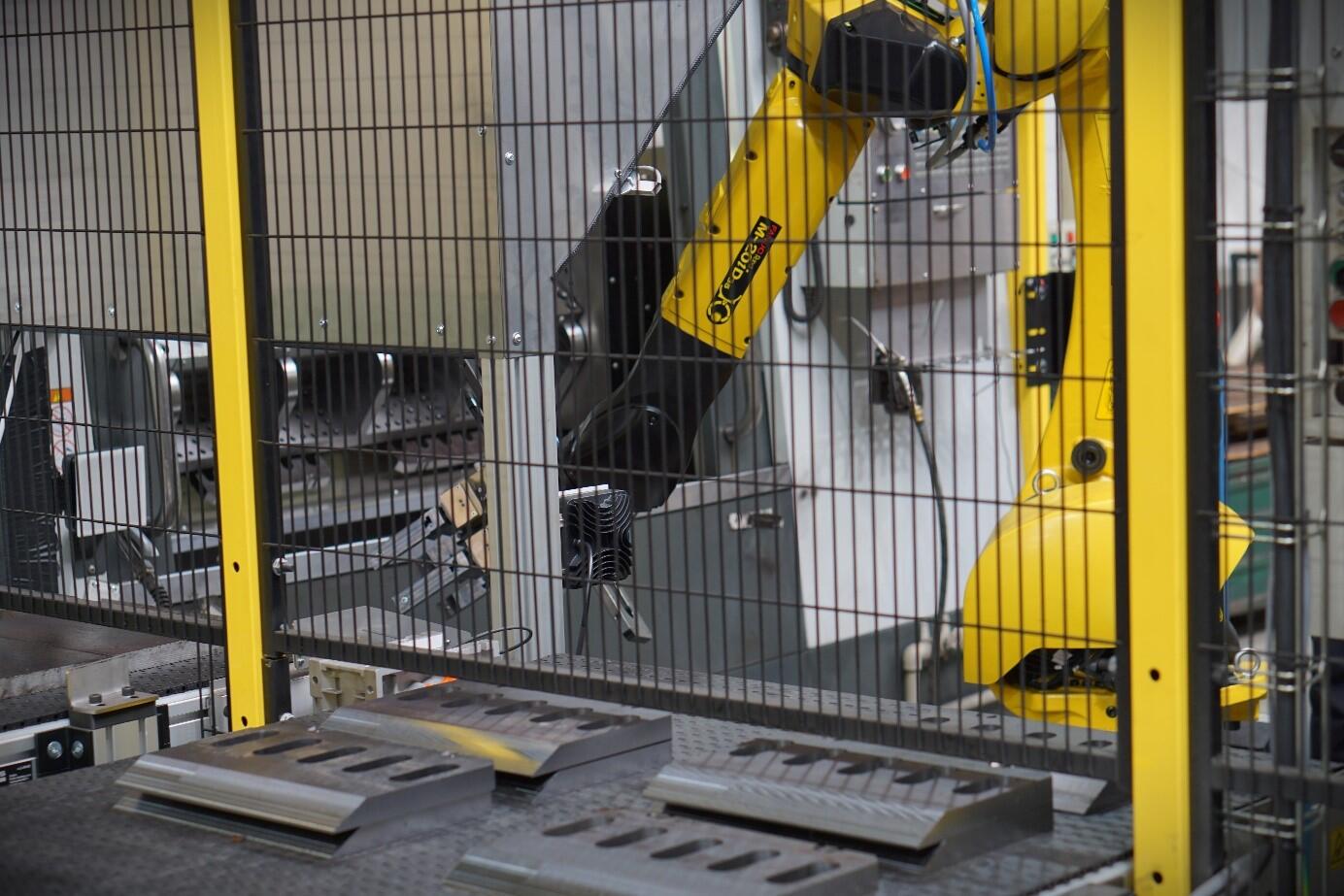FANUC's new robotic workstation: the next step towards factory automation
To accelerate the pace of industrial knife production and increase overall efficiency and flexibility, we have implemented a new robotic system from the Japanese industry leader FANUC.

Robotic arm will make the operation of milling centres more efficient
The robot is the ideal collaborator for strenuous tasks and also a great support in the event of a shortage of manpower. In order to be competitive in the long term and to be able to meet our obligations to domestic and foreign customers on time and in first-class quality, we have purchased a robotic arm to operate milling centres.
Introducing cutting-edge Japanese automation technology
It is a handling programmable robot from the renowned Japanese manufacturer FANUC M-20iD/35, placed on a floor console. It is driven by an AC servo motor with high handling accuracy (0.03mm) and a large range of motion (reach is 1831mm). His hand has six movable joints, which it can rotate, accordingly through each axis, in the range from 180 to 540 angular degrees. The maximum permissible weight of a manipulated part is 35 kg.
New robotic workplace for universal use
The handling robotic arm is a reinforcement of the milling workplace, which consists of two programmable CNC machining centres and a loading and unloading belt. These vertical machining centres allow milling in four axes of motion. The centre is controlled by a CNC system of the same name with special rotary tables, which use four hydraulic pistons and special clamps of our design to reliably clamp workpieces. This solution enables very fast and efficient automatic exchange of workpieces in conjunction with a robotic handling arm with a width of up to 220 mm. CNC milling machines are equipped with magazines with a large number of tools and they change automatically, which ensures long production cycles in automatic mode. The milling workplace also includes belts ensuring a continuous flow of unmachined semi-finished products to CNC machines for machining operations and then the flow of finished workpieces from the workplace ready for palletizing.
The robotic workplace is built as a universal one, so it allows the machining of a wider range of workpieces, which can enter either as a raw semi-finished product with various additions or as a pre-ground part. The last part of the workplace is a deburring station designed for mechanical cleaning of workpiece surfaces.

